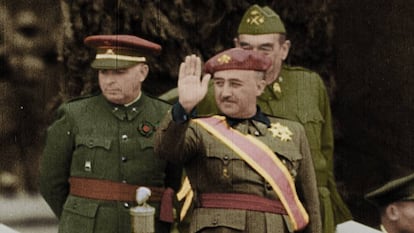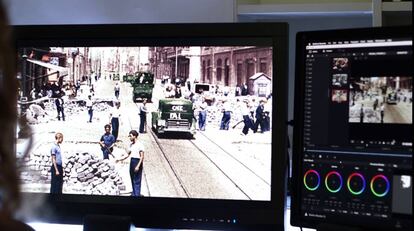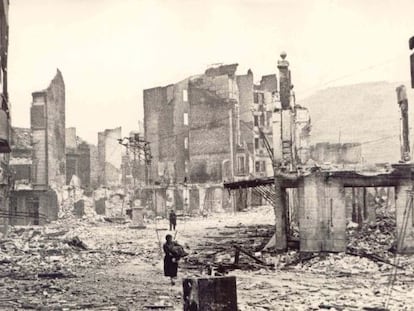All the colors of the Spanish Civil War
British historian Antony Beevor on his role in new documentary marking 80th anniversary of conflict

Film and television have distorted young people’s ideas about history, which is why it is important to periodically revisit the major events of the past in a simple and well-structured way, says British historian Antony Beevor, who has just helped tell the story of the Spanish Civil War to younger generations. And if history can be brought alive by the use of color film, as it was in this case, so much the better, he adds

Beevor is the historical advisor to a new three-part series called España dividida. La Guerra Civil en color (Spain divided. The Spanish Civil War in color) the first episode of which aired on Thursday night in Spain on the DMAX channel.
“The way in which it is written and structured is completely logical. As an advisor I can help avoid errors. I have always been struck by how the Spanish Civil War produces more argument than the whole of World War II, given the passionate viewpoints of both sides. This documentary has produced a version that is rigorous and balanced. It will have been worth the effort if the younger generations learn something more about this subject,” says Beevor.
In the Spanish Civil War everything was reduced to Fascism or Bolshevism
Antony Beevor
The three-hour documentary, produced by DMAX and Minoría Absoluta, also has bonus features showing interviews with historians (including Beevor), and the making of the series, which shows how the original footage was digitalized and then subjected to a color treatment process.
Most of the material used in the documentary comes from Spain’s national film archive, the Filmoteca Española. “These are propaganda films and photographs from both sides, because there was no reporting during the war,” says Francesc Escibano, who co-directed the project with Luis Carrizo. More than 400 films were used, from some 1,000 tins of 35-millimeter footage.
DMAX had originally intended to work with the team that produced World War II in Color, but decided to keep the project local. “They looked for teams, brought a special scanner in from Britain, and set about doing something that had never been done in Spain before, a fact we hadn’t realized until it was almost finished,” says Escribano.

“It’s hard for younger people to understand how this hatred reached the point of ripping a country in two, or how families were broken up, with brothers fighting on one side or the other,” says Beevor. “Documentaries like this can give an idea of how that happened. What’s more, it should be a lesson for the future: democracy can only survive on the basis of mutual trust and tolerance,” he adds.
Beevor did not write for the series, although he says he has long been fascinated by the conflict in the context of a dress rehearsal for World War II. He published a slim volume on the Spanish Civil War in 1982, which he later updated using archive material that became available after the collapse of the Soviet Union.
The digital colorizing process was carried out by Spanish technicians
The author of several best-selling books about World War II, Beevor says he retains a keen interest in Spain. “It would be irresponsible and incorrect to say that Spain is in danger of having another civil war. There are certain signs that remind one of the past, such as the dehumanization of those you hate or fear. It is a signal, it hasn’t gone away, but it is something that needs to be watched.”
Eighty years from the start of the Spanish Civil War, Beevor says it is vital to provide a rigorous and balanced account of the conflict, and also praises the documentary’s technical achievements: “The quality of the film and the colorized images have made something sophisticated for a lot of young people who have never seen black and white films. One of the reasons for colorizing pictures is to make them more recognizable for the younger generation. I can't see any other reason for it, but it is an important reason,” he says.
“The important lesson of the Spanish Civil War is how artificial alternatives were manipulated, reducing everything to either Fascism or Bolshevism, with the center ground torn apart. You cannot have a democracy or stable form of government if you have extremes that are constantly attacking each other and forcing other everybody else into extreme positions,” he concludes.
English version by Nick Lyne.








































